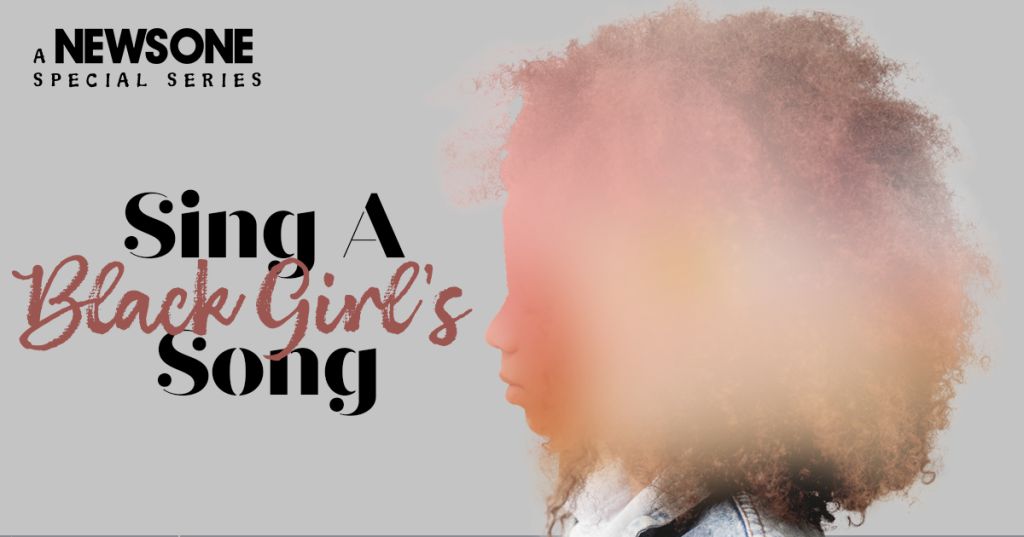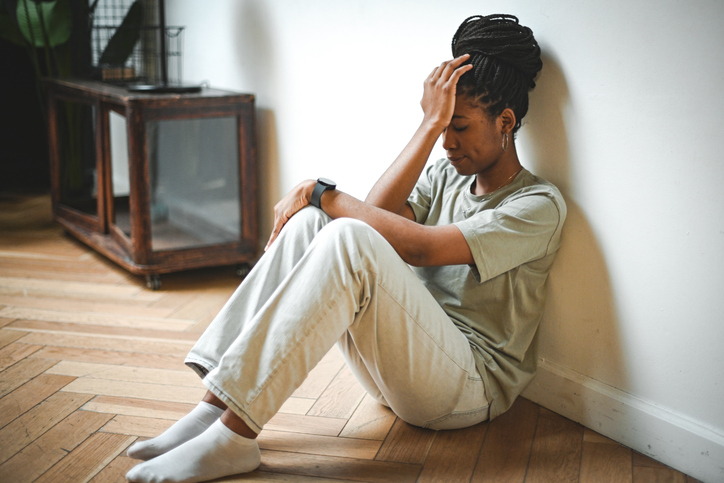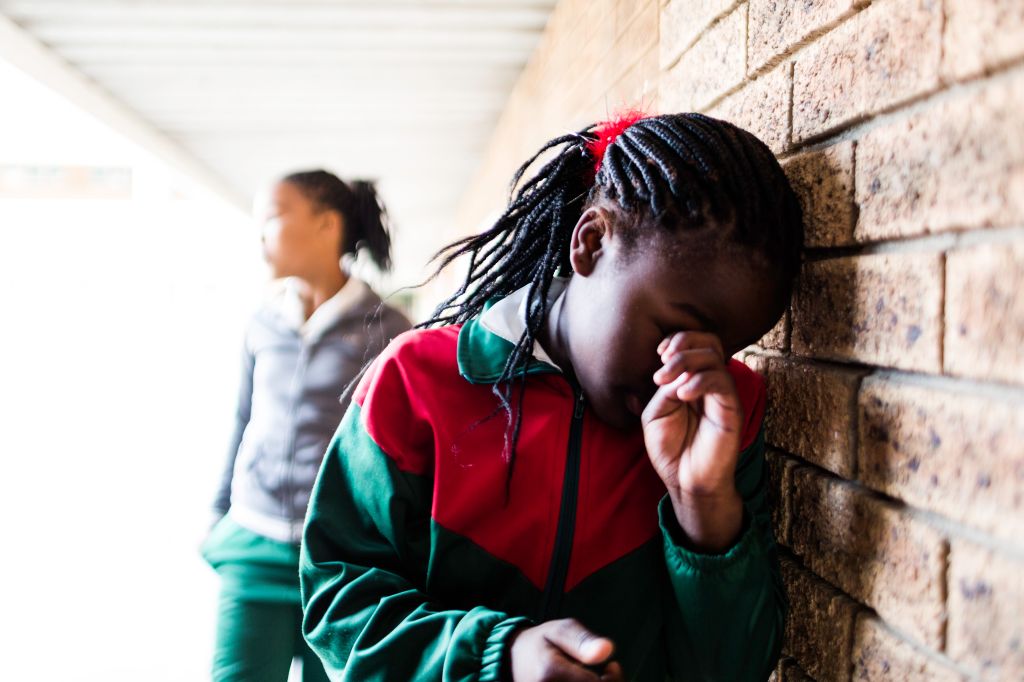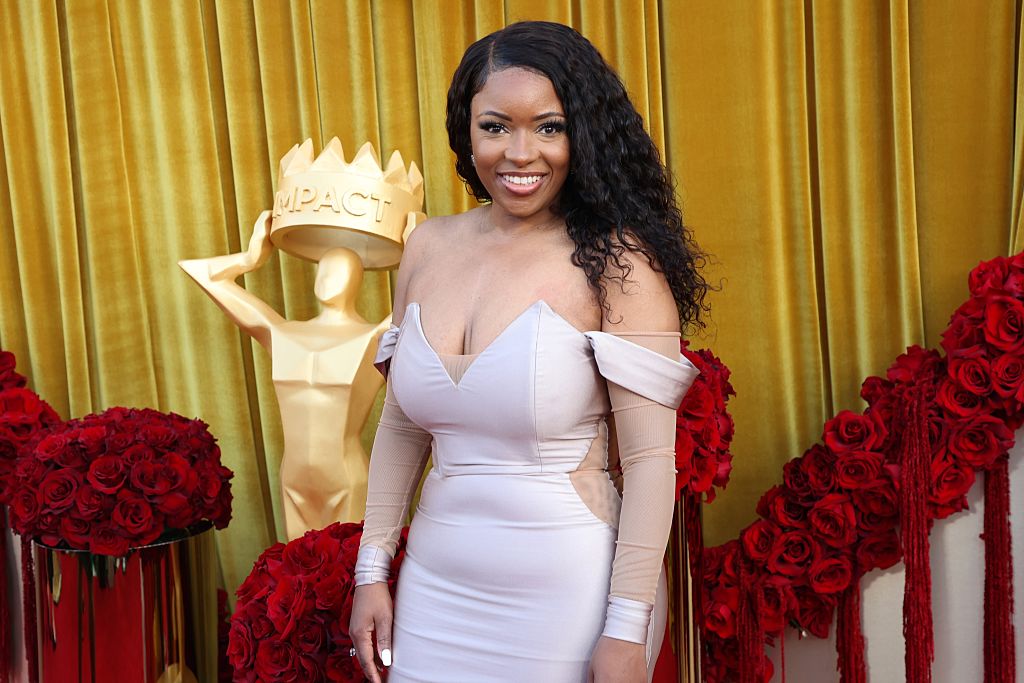Black Girls And Suicide: An American Crisis
Sing A Black Girl’s Song: Our Girls Are Most At Risk For Suicide, But We Can Help

Source: iOne Digital Creative Services
The following is the latest installation in NewsOne’s Special Series, An American Crisis: Black Child Suicide.
If you’re experiencing distress or need someone to talk to, you can dial 988 at any time for immediate support. Trained counselors are available to provide confidential support and assistance. You are not alone.
If a psychiatrist who treated her after a suicide attempt when she was 16 hadn’t been there and helped her parents understand the depression and desperation CA felt (initials used to protect privacy), there’s a strong possibility she wouldn’t be here, now, today. Black teenaged girls and women up to age 65 are the highest of those at risk for suicide in the U.S.—regardless of socioeconomic status. And in 2020, researchers at Columbia University reported that the rates of death by suicide among Black girls had nearly tripled. But for the intervention she lucked into, CA might have been one in those numbers.
After graduating high school at 15, CA left her big city home for a college many states away. But it wasn’t only the physical distance between CA’s college and home that challenged her. It was the cultural distance between the two worlds. CA had grown up in a city that was liberal, multicultural and multiethnic. Her school did not possess those characteristics. CA remembers that she thought differently than most students she encountered, listened to different music and preferred 1:1 intimate time over the dance party atmosphere others loved. She couldn’t dance, girls told her. Like many 16-year-olds, nothing was quite as important as fitting in and feeling liked. And advanced intellectual abilities do not necessarily mean advanced social/emotional abilities: CA didn’t know how to survive the bullying and ostracizing she was experiencing. Worse, her one touchstone, the boyfriend she’d met when she first arrived, was poised to leave the school in a month: he’d just been a visiting junior from another college.
In 2020, suicide was the leading cause of death for Black girls aged 12 to 14
CA begged her parents to let her come home. But the answer was a resounding, No. “They were from a generation in which people just put their heads down and pushed through any challenge,” CA says now, years later. “I just couldn’t,” she recalls. “I didn’t have that kind of strength, plus no one talked about depression, let alone therapy. Ever.”
The final straw for CA came on the day she was bombarded with slut-shaming messages. “My boyfriend and I were openly loving in a world where girls were supposed to pretend to be virgins, I was broken,” she continued. And then her voice dropped. “I swallowed every pill I could find and because some were allergy pills, I passed out.”
Found by her roommate not long after, 911 was called and CA was hospitalized. There, they had her drink activated charcoal which forced her to vomit. She does not remember any of the nurses being especially kind. Mostly, in her memory, their raised eyebrows and tone of voice seemed more chastising than supportive. “They looked at me like ‘why would you embarrass your parents, us, like this?’”
She didn’t know how to survive the bullying

Source: elenaleonova / Getty
But one doctor, a Black man, heard her fear, anxiety and pain and her loss of hope. He was able to explain to her parents what she’d been unable to—and they got it. CA’s father helped his daughter pack up, and he took her home where he and CA’s mother found a world-renowned psychiatrist, a Black woman, whom CA would engage then and later in life. Suicidal ideation, though not attempts, did rear its head at other moments in CA’s life. But after the attempt in college, she was sure to always have “excellent psychiatric and psychological supports, from medications to meditation and exercise—and keeping and nurturing a small sacred circle of beloved friends.” CA’s story has a happy ending. She went on to complete both college and graduate school with honors and ultimately embark on a very successful career as a writer.
For tens of thousands of other Black girls since then, such an ending seems far from being possible. For others, it is not a possibility at all. According to the American Journal of Psychiatry, suicide rates for Black women and girls ages 15 to 24 have more than doubled over the past two decades. In 2020, suicide was the leading cause of death for Black girls aged 12 to 14. And while suicide is the leading cause of death among all young people, with the highest rates among white children, Native American kids and Alaskan Natives, those rates have been on the decline over the last 10 years.
For Black girls and young women the risk only grows as they do: in a recent study looking only at women, researchers from Boston University Chobanian & Avedisian School of Medicine and Howard University found that Black women 18 to 65 years old have the highest risk for suicide, irrespective of their socioeconomic status.
The rate of death by suicide among Black girls has nearly tripled
Los Angeles-based Dr. Tierra Ellis – a licensed clinical and school psychologist, and the founder and executive director of Psyches of Color, a nonprofit that provides mental health support to at-risk Black and Latinx adolescents and young adults, blames bullying, cyberbullying and the role of social media in young people’s lives. Black girls and teens compare their bodies, hair and skin color to that of models and other influencers online – and feel like they can’t measure up. Noting the race-and-gender-based marginalization African American Black girls and women are born into, Dr. Ellis shared that, “Black girls and teens are most affected by what they consume on social media, leaving them more susceptible to feelings of hopelessness and the belief that they are failures before their lives even get started,” she says.
“Along with cyberbullying and attacks [Black girls, teens and young adults] contend with constant messaging like ‘you’re pretty for a Black girl’ or ‘you’re not that cute,’ along with prevalent messaging that stems from colorism and internalized racism,” reports Dr. Ellis. “All of this damaging messaging around what society says is beautiful is now amplified on social media just as Black girls are beginning to develop a sense of self.”
Medical racism regularly disrupts Black children’s treatment. White psychologists account for 86 % of all psychologists in the U.S.
Ellis continued, cautioning that we also had to account for “…structural racism and our lack of access to healthcare. Proper and thorough healthcare can contribute in a major way to the prevention of suicide.” This is especially true when mental health providers and others in the medical field share similar cultural backgrounds and their patients. But as of now, 86% of all American psychologists are white.

Source: Georgia Court / Getty
Dr. Ellis advises that we must work harder to destigmatize all people and particularly our young ones when they seek out help. In our everyday language, we tend to taunt or dismiss people struggling with an emotional wound, something we typically don’t do when the wound is easily visible. “The fear of being seen as ‘weak’ or ‘crazy’ is terrifying for our children,” she says. “It can keep Black girls – Black Americans in general – from seeking the help they need, especially the ones who need it the most,” said Dr. Ellis. She’s right. Adverse childhood experiences (ACEs), including poverty or the loss of a parent are major drivers of suicide amongst young people. And Black children are overrepresented in this category.
Create and maintain climates in which children have the vocabulary and space to express themselves so they the support they need
That, along with medical racism and implicit bias, regularly leads to misclassifying Black children as behaviorally challenged–problematic–rather than people living with often socially driven mental health concerns. In thinking about our girls for example, its hard to see them as survivors of sexual assault, a major catalyst for suicidal ideation and suicide completion, when the prevailing social thought, spoken or not, casts Black girls and women as sexually advanced and inappropriate. She caused him / them to do that to her.
But all of these are harms we can disrupt. What may take decades to change in society begins in our homes and communities. We have the power to think and act differently so our girls know that even with the social dangers and attacks, there are safe places for them.
As this series has noted the work being done by the National CARES Mentoring Movement, we also highlight the work undertaken by Dr. Erin Bogan, a developmental psychologist with the nonprofit Equal Opportunity Schools (EOS). Their research focuses on the importance of student belonging and they have produced a two-part report guiding educators to create and maintain emotional climates in which children have the vocabulary and space to express themselves and verbalize their emotions, with confidence that they’ll get the support they need.
“It is important that we are modeling for children the strategies necessary to manage negative thoughts and emotions in and out of the classroom,” Dr. Bogan offers. “When we create environments where children feel safe and can be vulnerable, we are not only better positioned to support them when they are experiencing challenges and emotional distress, but empower them to reframe those challenges and build resiliency that will allow them to overcome whatever difficulties they may face.”
Tomika Anderson is a veteran journalist and writer for outlets including CNN and The Atlantic. Ms. Anderson, an award-winning business owner, is an adjunct professor of writing at American University.
RESOURCES
If you’re experiencing distress or need someone to talk to, you can dial 988 at any time for immediate support. Trained counselors are available to provide confidential support and assistance. You are not alone.
WATCH: Black Child Suicide: A Meditation For Survival With Dionne Monsanto
Three Things You Can Do Right Now if You Feel Overwhelmed
-
Reach Out for Support: For young people, please immediately talk to a trusted adult about how you’re feeling. This could be a parent, guardian, teacher, school counselor, or another supportive adult in your life. For all of us: it’s always right to ask for help. The number 988 is always available as are the numbers included below.
-
Practice Self-Care: Listen to music you love. Take deep breaths. Meditate. Walk or jog or dance. These are aerobic exercises that help increase serotonin and can make you feel immediately better. If it’s a beautiful day and safe to go outside, go outside. Take in the fresh air. Look for small things that might make you smile. Journal. Listen to music. Do a hobby you enjoy. Drink water. You matter. We need you here.
-
Seek Professional Help: If feelings of overwhelm persist or become too much to handle, talk to one of the free counselors on one of the helplines. What free or low-cost mental health supports are available to you? Ask if they can recommend a Black therapist. There’s often greater synergy between people of similar backgrounds.
Additional National Hotlines
-
The National Suicide Prevention Lifeline: (800) 273-8255 available 24/7.
-
The Crisis Text Line – text TALK to 741-741, available 24/7
-
The Steve Fund text STEVE to 741741
-
988 Suicide & Crisis Lifeline – Text 988
Books and Films to Consider
Black Pain: It Just Looks Like We’re Not Hurting by Terrie M. Williams. Delves into the emotional and psychological challenges faced by Black people, offering insights into how these struggles can affect children and adolescents.
Age Range: Adult readers, suitable for parents and caregivers of Black children and adolescents.
The ABCs of Black Girl Magic by LaNesha Tabb and Dr. Jamilah Thompkins-Bigelow. An empowering picture book celebrating Black girlhood while addressing self-esteem, identity and mental well-being
Age Range: Children between the ages of 4 and 8 or 9.
Teen Mental Health and Suicide in Black Families. This PBS documentary explores the unique challenges and experiences surrounding teenagers’ mental health, and depression and suicide within Black families. It offers insights and resources for support.
Age Range: Teenagers 13 years old and up, and adults.

















